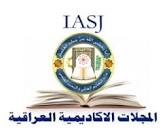Quality Difference Between Two Location on Tigris River Within Mosul City
Abstract
Tigris River is one of the main important surface water resources in Iraq. This necessitates continuous study of its quality. In this regard two locations had been chosen to be studied through 12 month, starting from April (2000) up to March (2001). The study included testing of some physical and chemical parameters of the two locations. The locations were first at Msherfa village (water treatment plant), before the river enters the city of Mosul, the other is down stream at Al-Bosafe (water treatment plant). Waste water as much as 400000 m3/day of different kinds reaches the river within Mosul City. Sanitary waste is assumed as the main part; accordingly some parameters surpass international recommended levels, mainly organic load and the hardness. Eutrophication phenomenon was clear too, due to change in taste, color and odor of the raw water during summer time. Turbidity due to organic load was quite clear due to the organic load and the main nutrient of nitrogen and phosphorous. Finally the drop in pH did occur probably due to carbon dioxide liberated from organic compounds cracking. Results of the studied locations reflected that Tigris river water quality was beyond the international recommended standard of raw water; conventional raw water treatment plant could not treat and improve such quality of raw water and restoring it to be within the international recommended levels of water supply.




